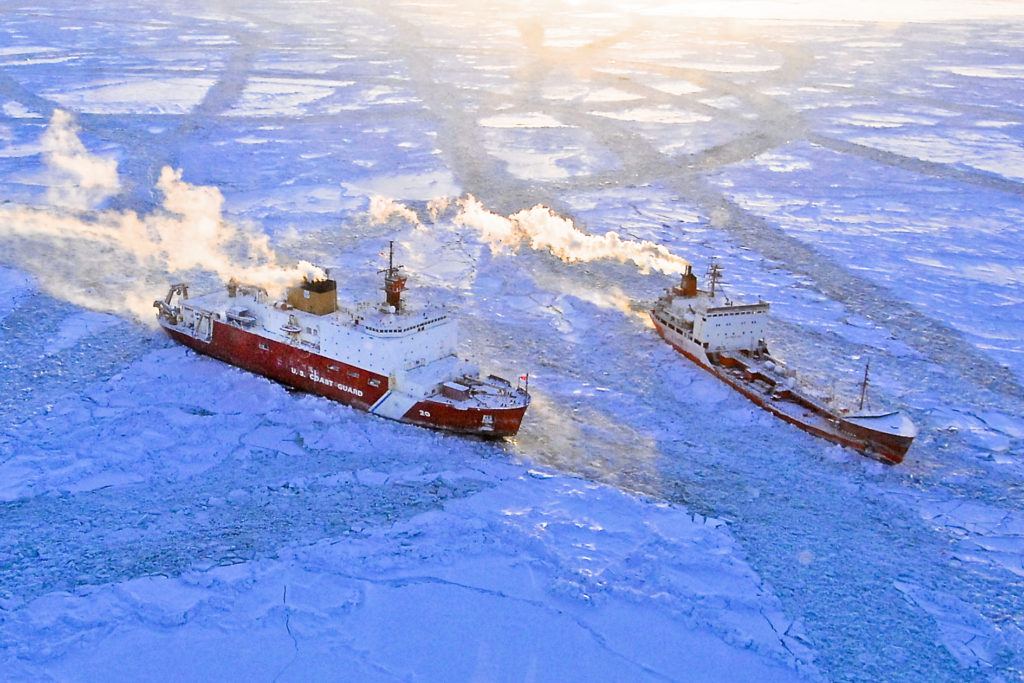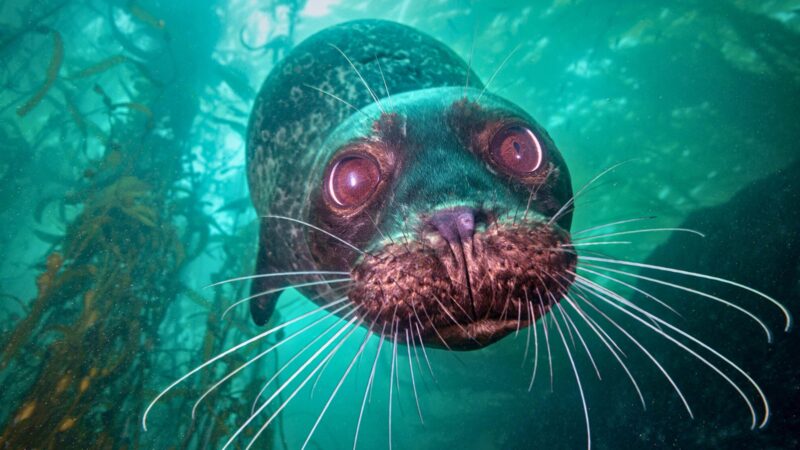
Arctic oil and environmental legacy in the crosshairs
President Barack Obama’s Arctic oil drilling ban and environmental legacy are in President Trump’s crosshairs. Obama’s last days in the Oval Office included a flurry of new environmental protections. In his first days the incoming president is busy taking actions to dismantle them.
President Barack Obama’s environmental legacy and his Arctic oil drilling ban are in the crosshairs of the new president. Obama’s last days in the Oval office included a flurry of environmental protections. The first days of the Trump administration efforts are being made to dismantle them.
President Barack Obama’s last days in the Oval Office included a flurry of new environmental protections. In his first days the incoming president is busy trying to dismantle them.
One of Obama’s most controversial last moves was making a massive chunk of Alaska’s Arctic seabed off limits to oil drilling forever.
President Trump has vowed to lift moratoriums on energy production on federal lands as quickly as possible. Yesterday morning he doubled down on that promise declaring his administration will “be cutting regulations massively”—up to 75 percent of them.
The statement echoes his Inauguration Day promise that “from this day forward, a new vision will govern our land.”
Achieving national energy independence is part of that vision. To make it happen, Trump aims to remove obstacles to what his campaign website estimates to be $50 trillion in untapped fossil fuel reserves, many of which are on federal lands—both on and offshore. Deregulation in general is a guiding principle for the Trump administration, which has been described by advocates as more influenced by the fossil fuel industry than any other.
While Obama’s ban doesn’t affect current oil and gas leases in Alaska state waters, it encompasses millions of acres of federally owned Arctic sea, taking advantage of an obscure provision of the Continental Outer Shelf Lands Act of 1953.
President Obama is only the second president to invoke the law and permanently ban drilling on a seabed. The law is controversial because it only works in one direction—once a president has conserved the area, future presidents cannot undo it.
So far, the law has not been contested.
But the lack of a legal challenge may have more to do with what’s at stake. The 75 square miles of Florida Keys seabed President Eisenhower signed the provision to protect lacks the drilling potential of the Arctic, said Cara Horowitz, director of UCLA’s Emmett Center on Climate Change and the Environment.
Reading the political tea leaves, Horowitz said it’s pretty clear Trump sees Obama’s withdrawal from the Arctic as a mistake. “Trump could essentially on day one, or soon after he takes office, attempt to undo the withdrawal with his own executive order,” Horowitz said.
That may not be as quick or easy as it sounds.
“It takes a lot of work to undo environmental regulations, and while there’s no doubt that is going to be the direction the Trump administration tries to take us, it can’t be done on a whim or a month’s notice,” Horowitz said.
Niel Lawrence, Alaska Director for the Natural Resources Defense Council, said Obama moved to protect the Arctic at an opportune moment—right now, the fossil fuel industry isn’t too interested.
“When Shell abandoned the region in September 2015 it was north of seven billion dollars in the hole,” Lawrence said. “The company believed it would be another 15 years before the oil flowed.”
The fact that Shell ultimately admitted defeat and left means that Obama’s ban is more of a symbolic gesture or even “a big piece of political theater,” as UCLA’s Horowitz puts it.
But Lawrence contends it could also be a long-term tactic to battle climate change. “With a bunch of oil and gas in the Arctic sea, the global pressure to drill for it—even if it’s not high now—is going to come back.”
That pressure could increase dramatically if Arctic ice continues to melt at a rapid pace from global warming.
Ironically, increasing access to fossil fuels, one of the primary drivers of global warming and ice melt, could negatively affect Trump’s private businesses.
Trump’s real estate empire has been built in two of the places that are most vulnerable to climate change and sea level rise: Southern Florida and Manhattan. Thus, it puzzles many environmental experts that he continues to invalidate the risks of climate change.
In 2012, Trump infamously tweeted that climate change was a Chinese hoax to make U.S. manufacturing non-competitive. He has since walked the statement back, but UCLA law professor Alex Wang said Trump’s ascendance has already benefitted China, which now seeks to be the global leader in clean energy.
After the 2015 Paris climate agreement, there was hope that China and the United States—the world’s two largest carbon emitters—would serve as checks on each other’s progress.
“Trump coming in essentially throws this into disarray and cedes development of clean energy to China—which already has cost advantages for manufacturing solar and wind,” Wang said.
Obama’s ban on Arctic drilling may have acknowledged the need for global restraint and a shift to clean energy, but winds of change are blowing. At Trump’s inauguration, he said “from this moment on it’s going to be America first.”
Within a day, all references to climate change were deleted from the White House website.
And one of Trump’s first executive orders was freezing $4 billion of Environmental Protection Agency funding.
However, when it comes to reversing Obama’s environmental protections such as the Arctic oil ban—he’s in uncharted legal territory.
Feature Image: U.S. Coast Guard in the Arctic Sea
Published:




